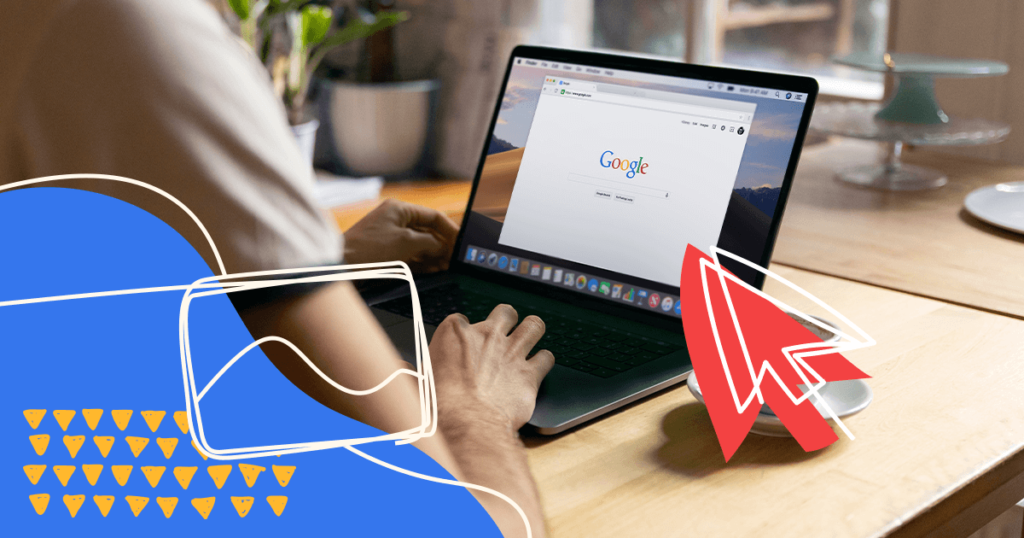Google Ads, formerly Google Adwords, helps you target your audience better and display ads that yield results within minutes. You can specify the parameters of your ads and skip the typical SEO ranking of organic results on Google’s SERPs to compete better for traffic.
As an online business, using digital marketing to promote your content and attract more customers helps drive revenue.
However, competition for a space on the top rankings is challenging, depending on the competitors in your industry.
While excellent SEO can help you climb the ranks, it can take months or years to see remarkable results. This period can hinder your marketing goals and take longer to hit your objectives.
With Google Ads, you can display ads on Google’s SERPs that lead to pages on your website that drive conversion better and enable you to see results faster.
To walk you through how you can get started using Google Ads to boost your business’s growth, we’ll discuss the following:
What Is Google Ads?
Google Ads, also known as Google Ads, is Google’s digital advertising system where marketers can bid on specific keywords to rank their ads on SERPs. You can spot these ads above, below or on the right side of organic results.
The results from Google Ads have the Ad tag next to their URLs. While you can rank organically with SEO, ads are different because you have to bid for their ranks.
Google Ads is the most popular PPC advertising option available to digital marketers. PPC visitors are 50% more likely to buy than organic visitors.
We can understand this insight because you can use ads to specify who sees them.
Being able to target your prospects better can increase the likelihood that when someone enters your page, they convert or do the action you made the ad to motivate.
You can use ads to target your prospects through Google’s search engine and partner sites. From specifying your ad based on a relevant keyword to retargeting customers that can progress further down your marketing funnel, you can match search intent better.
Google Ads supplements SEO in your digital marketing strategy. Both tools supplement each other to enable you to capitalize on opportunities. While SEO focuses on the long game. Google Ads brings quicker results to the table, including:
- Customizing ad targets according to audience specifications.
- Distributing ads on multiple Google-owned channels like Youtube.
- Building detailed ad reports and gaining insights for optimizing your campaigns.
- Promoting one or numerous campaigns with several ads like text and video.
If you are running time-sensitive events like seasonal sales or promo discounts, you can use Google Ads to advertise your products and target more customers willing to purchase.
Advantages of Using Google Ads
In its Economic Impact report, Google estimates that businesses make an average of $2 in revenue for every $1 they spend on Google Ads. This estimate translates to about 200% ROI for businesses.
Google Ads enables you to promote ads that drive more qualified traffic to your website or business page. For example, you can bid for a keyword related to buying a product on your online e-commerce store and attract prospects that search for that keyword with transactional intent.
Target Your Audience With Better Precision
The ROI from ad spend would not be good if Google displayed your ads to people that were not interested in your product. In that case, you would pay for clicked ads without getting revenue because the majority of your traffic is not buying your products.
You can specify the audience you want Google to display your ads to based on factors such as:
- Age
- Day
- Time
- Keywords
- Geographical location
Elements including audience demographics like age, location and intent keywords are typical, especially when building your buyer personas.
However, Google Ads helps you dig deeper and target prospective customers better with factors like the time of the day.
Let’s say you are a food delivery service with your local store close to office spaces. You can specify your ads to show only on weekdays, around lunch break periods.
Experimenting with what time works best enables you to maximize ad spend by focusing on ads that yield the best results.
Google Ads also enables you to target your ads to audiences based on their device, including computers, phones, tablets and smart TVs.
Depending on your ad campaign type, you can use advanced targeting to narrow your reach to operating systems, device types and models.
If you sell accessories for several devices, you can use this feature to display ads for specific accessories on the device they complement. \With such a higher focus, you can increase conversion rates by targeting prospects most likely to purchase.
If prospective customers have shown an interest in your product without purchasing, Google Ads allows you to retarget them to keep your brand in mind.
Retargeting involves customizing your ads to show on other sites or apps your visitors use. You can choose which sites host your ads, but the site’s relevancy can yield better results depending on your campaign.
Only Pay When Prospects Click Your Ads
Google Ads has a PPC payment structure, so you only pay for clicks on your ads.
When a prospect clicks your ad, you have to pay cost-per-click (CPC) for the ad. While this helps you save money on your marketing budget, you can improve your copy and landing pages to turn this expense into a cost.
For example, if a customer clicks your ad without taking actions that drive your marketing objectives, like signing up for a newsletter or downloading an ebook, the ad has yet to yield results.
Yes, there is no perfect conversion rate of 100%, but the higher, the better.
Track Your Ads To Optimize Their Performance
By measuring your ads’ performance, you can spot areas where you can improve and optimize your budget. You can set a quota for each ad according to its purpose.
Eliminate ads that are not effective and focus on those that drive more traffic and conversions.
You can also analyze the traffic that clicks your ads and align your landing page with increasing conversion.
Let’s say you notice a particular ad drives significant traffic, but the page it directs visitors to has a high bounce rate with few conversions.
You can increase conversions by improving the landing page’s design, content, or speed. Ensure the page matches the intent of visitors that click your ads.
While these benefits help you promote your product better and drive your business’s revenue, you need to have a Google Ads account to enjoy them.
Setting up a Google Ads Account
Google offers a $500 ad credit for new advertisers with a billing address in the United States when they spend $500 on advertising campaigns within 60 days. You can find more information about the offer on the Google Ads homepage.
Let’s go through the steps to creating your account and starting a new campaign.
1. Sign In With Your Google Account
Start by visiting the Google Ads homepage to sign in with your Google account. You will be prompted to input the following information:
- Your business name: Google shows your ads when people search for your name.
- Your website: This should be the most relevant webpage, depending on what you are advertising. After inputting your website, Google scans the page to show you the mobile and desktop versions of what people who click your ad will see.
- Select your primary marketing goal: You can choose from a list of options, including getting more website leads and visits to your business’s location.
Depending on your marketing goal, the next page can direct you to create a video ad, write a SERP ad, or link your Google Ads to Google Analytics to:
- Measure and monitor results better
- Understand your webpage’s traffic engagement
- Make data-driven decisions that optimize your ads’ performance
The next steps involve creating a new ad campaign.
2. Create Your First Campaign
For a written search ad, you can input several headlines and description variations for your ad. Later, you can check which variation performs best and keep those.
You can also show a call button in your ad so prospects can contact your business via phone.
The Ad Preview widget to the right shows you various combinations of headlines and descriptions, representing how your ads will appear on SERPs.
Next, you can select and add keyword themes for your ads from Google’s suggestions. These themes should be relevant to your ad to have better chances of bidding and quality.
Google shows your ads for searches similar to the keyword themes, and you can add negative keywords where Google should not display your ads.
Selecting the language you want to advertise in helps you target audiences in global markets.
3. Choose the Location for Your Ads
Google Ads enables you to display your ads for searches from locations near your business’s physical address or target specific regions. Your target audience in your specified locations and people interested in those areas can see your ads.
4. Set Your Ad Budget
While setting the budget for your ads, you can select from Google’s recommendations or enter a budget that fits your plans.
Remember that you only pay for ads that people click. You can spend less or more on several days than your daily average, but your monthly max is the limit.
5. Submit Your Ad
After you set your budget, the next page allows you to review your ad. You can edit and change the previous settings, including your campaign name, keyword themes, and location.
Look through the page to ensure everything is correct.
After reviewing your campaign, Google will direct you to submit your payment information.
For Ads, Google charges you when your ad costs finish the budget you set or 30 days after you create your ad campaign.
How Google Ads Works
Google Ads uses a system to decide which ads to display during searches and the rank of those ads.
Besides your bid, the quality score is the other significant factor that impacts your ad’s ranking.
Before we get into what the quality score means, let’s address bid auctions.
Google auctions run every time someone makes a search query. Once the query is made, Google processes it to auction the ad positions and each advertiser’s CPC. The ads you place through Google Ads enter into auctions involving search queries that include relevant keywords you bid on.
Your ad’s quality score is obtained by its CTR (click-through rate), keyword relevance and the quality of your landing page.
The product of the maximum bid and quality score determines the ad ranking. The ad with the highest rank gets the highest position in the auction.
The ad rank also affects your CPC as you pay the ad rank of the ad below yours divided by your quality score.
Achieve Better Google Analytics Results With Better Content
Google Ads is a digital marketing tool that helps you target prospective customers faster.
Besides understanding how to implement the right keywords and bids, your content is pivotal to ensuring you don’t lose money on ads without getting considerable ROI.
Instead of worrying about increasing your workforce to handle your content creation, you can leverage freelancers on WriterAccess to develop engaging copy that improves your Google Ads’ effectiveness in resonating with your target audience and driving more conversions.
WriterAccess is a talent marketplace that enables you to create and scale compelling copy with the help of freelancer professionals.
With professionals developing high-quality content according to your brand’s tone and voice, you can scale engaging content that attracts leads in less time.
Start our 14-day free trial to access our impressive pool of freelancers today and begin generating content that converts.








